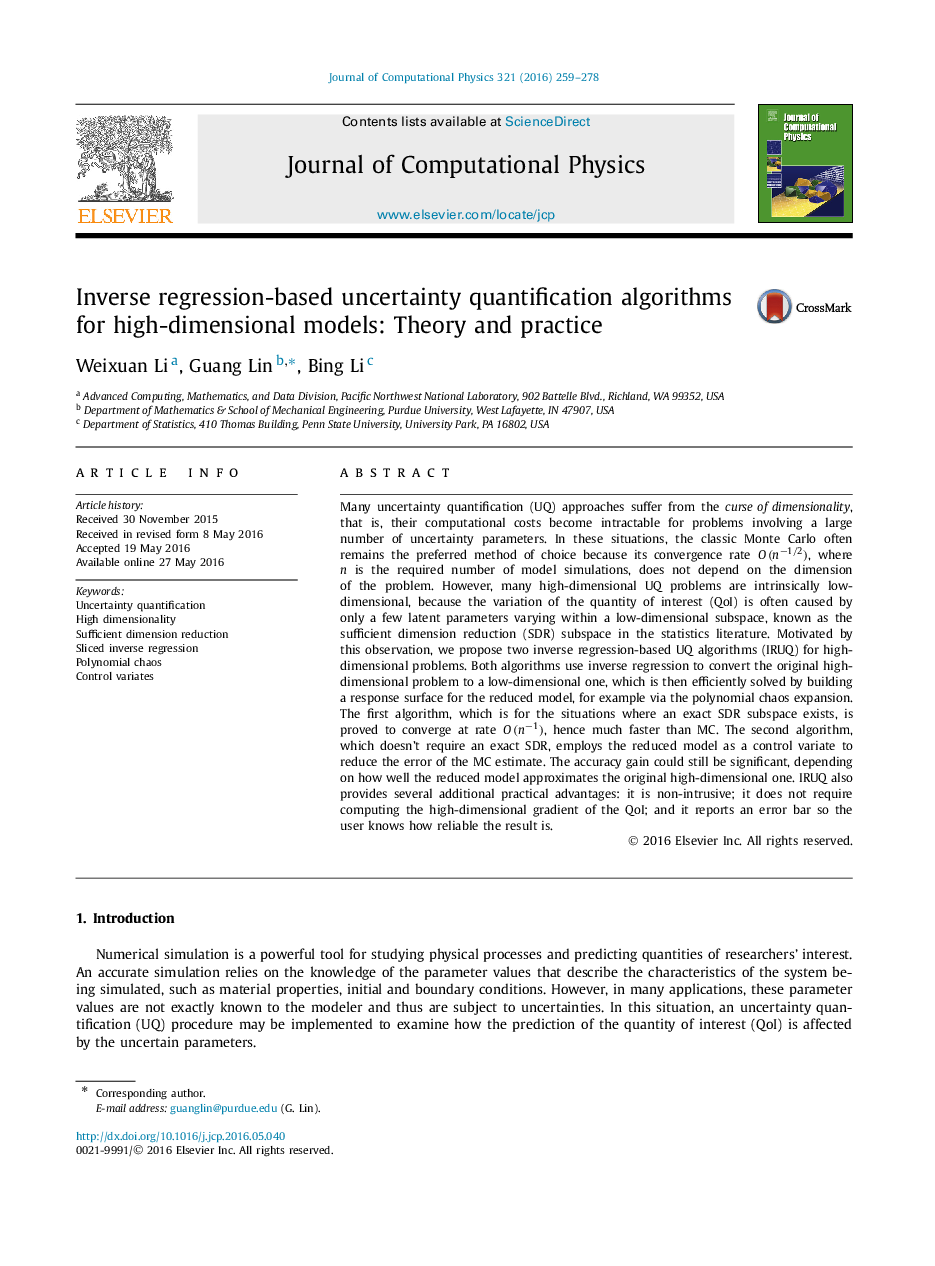| کد مقاله | کد نشریه | سال انتشار | مقاله انگلیسی | نسخه تمام متن |
|---|---|---|---|---|
| 6929767 | 867531 | 2016 | 20 صفحه PDF | دانلود رایگان |
عنوان انگلیسی مقاله ISI
Inverse regression-based uncertainty quantification algorithms for high-dimensional models: Theory and practice
ترجمه فارسی عنوان
الگوریتم های اندازه گیری عدم قطعیت معکوس بر اساس مدل رگرسیون معکوس برای مدل های با ابعاد بزرگ: نظریه و عمل
دانلود مقاله + سفارش ترجمه
دانلود مقاله ISI انگلیسی
رایگان برای ایرانیان
کلمات کلیدی
عدم قطعیت اندازه گیری، ابعاد بزرگ، کاهش اندازه مناسب، رگرسیون معکوس برش خورده، هرج و مرج چندجملهای، کنترل متفاوت است
موضوعات مرتبط
مهندسی و علوم پایه
مهندسی کامپیوتر
نرم افزارهای علوم کامپیوتر
چکیده انگلیسی
Many uncertainty quantification (UQ) approaches suffer from the curse of dimensionality, that is, their computational costs become intractable for problems involving a large number of uncertainty parameters. In these situations, the classic Monte Carlo often remains the preferred method of choice because its convergence rate O(nâ1/2), where n is the required number of model simulations, does not depend on the dimension of the problem. However, many high-dimensional UQ problems are intrinsically low-dimensional, because the variation of the quantity of interest (QoI) is often caused by only a few latent parameters varying within a low-dimensional subspace, known as the sufficient dimension reduction (SDR) subspace in the statistics literature. Motivated by this observation, we propose two inverse regression-based UQ algorithms (IRUQ) for high-dimensional problems. Both algorithms use inverse regression to convert the original high-dimensional problem to a low-dimensional one, which is then efficiently solved by building a response surface for the reduced model, for example via the polynomial chaos expansion. The first algorithm, which is for the situations where an exact SDR subspace exists, is proved to converge at rate O(nâ1), hence much faster than MC. The second algorithm, which doesn't require an exact SDR, employs the reduced model as a control variate to reduce the error of the MC estimate. The accuracy gain could still be significant, depending on how well the reduced model approximates the original high-dimensional one. IRUQ also provides several additional practical advantages: it is non-intrusive; it does not require computing the high-dimensional gradient of the QoI; and it reports an error bar so the user knows how reliable the result is.
ناشر
Database: Elsevier - ScienceDirect (ساینس دایرکت)
Journal: Journal of Computational Physics - Volume 321, 15 September 2016, Pages 259-278
Journal: Journal of Computational Physics - Volume 321, 15 September 2016, Pages 259-278
نویسندگان
Weixuan Li, Guang Lin, Bing Li,
